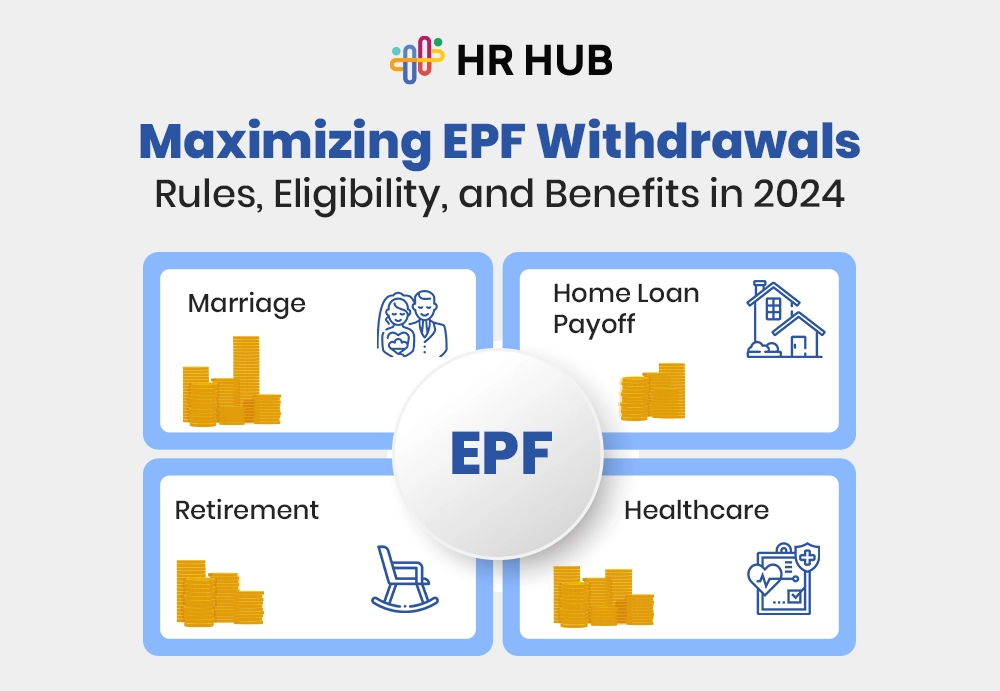Picture this: It’s Q1 2025. When a government notification drops, you review your payroll reports—your salary structure has become non-compliant overnight. Not because you were careless. But because the rules finally changed. And now, they’re being enforced.
The much-anticipated labor law changes in India 2025 are knocking at the doors of Indian workplaces. While discussions around these new codes have circled since 2020, 2025 will likely mark the beginning of their full-scale implementation. For HR professionals, this is more than just a regulatory update—it’s a moment of reckoning.
If your HR systems are still tuned to pre-2020 rules, it’s time to rebuild, retrain, and rewire.
The Four Labor Codes: A Quick Refresher (Now With Real Impact)
India’s labor laws were once a complex puzzle of 29 separate Acts, many dating back to the colonial era. This scattered framework created regulatory chaos—conflicting state rules, outdated definitions, and ambiguous compliance timelines.
To solve this, the Indian government undertook one of the most ambitious reforms in labor history: consolidating the 29 laws into four comprehensive labor codes. The goal? Simplification, standardization, and a future anchored in digital-first compliance.
Let’s unpack what these four codes bring to the table, beyond the textbook definitions.
1. Code on Wages, 2019
Scope: Minimum Wages Act, Payment of Wages Act, Bonus Act, and Equal Remuneration Act
This code establishes a universal wage payment and protection framework, regardless of industry or income level.
Key Provisions:
- Minimum wages now apply to all workers, not just scheduled employees.
- Timely payment of wages (no delays allowed beyond 7 or 10 days).
- Gender-based wage discrimination is strictly prohibited.
- The central government's introduction of a “floor wage” means that states cannot exceed this threshold.
Why it matters: Organizations will have to overhaul their salary structures, especially those with disproportionate allowances versus basic wages, as these directly impact PF, bonus, and gratuity. Plus, late payments can attract penalties and prosecutions.
2. Code on Social Security, 2020
Scope: EPF Act, ESI Act, Maternity Benefit Act, Payment of Gratuity Act, and welfare laws for gig workers
This is the most inclusive labor code in Indian law, aiming to include informal, gig, and platform workers in the social safety net for the first time.
Key Provisions:
- Universal social security number based on Aadhaar.
- Mandatory EPF/ESI coverage for eligible workers.
- Maternity benefits extended to all sectors, including contract staff.
- Welfare boards and schemes for unorganized workers and gig economy participants.
- Aggregator contribution obligations (e.g., Ola, Zomato) for gig workers.
Why it matters: Companies must track all types of employment digitally, not just salaried roles. From Uber drivers to part-time instructors, businesses must now account for and contribute to their social security.
3. Occupational Safety, Health and Working Conditions (OSH) Code, 2020
Scope: Covers 13 laws, including the Factories Act, Contract Labour Act, Mines Act, and Working Journalists Act
This code envisions a safe, hygienic, and worker-friendly environment across all sectors, especially industries historically overlooked workplace welfare.
Key Provisions:
- Mandatory health and safety standards for establishments with 10+ workers.
- Companies must provide clean toilets, drinking water, and first aid facilities.
- Annual health checkups are mandated for specific sectors.
- Flexible work hours: Legal introduction of a 4-day workweek (48 hours max/week).
- Employer obligations for contract labor regulation and recordkeeping.
Why it matters: Every organization, from tech parks to warehouses, will now be scrutinized. HR teams must document safety practices, maintain up-to-date welfare registers, and offer formal health and hygiene benefits.
4. Industrial Relations Code, 2020
Scope: Industrial Disputes Act, Trade Unions Act, and Standing Orders Act
This code creates a balanced ecosystem between employer rights and employee protection, especially during strikes, layoffs, and disputes.
Key Provisions:
- Companies with 300+ employees now need government permission for retrenchment, layoffs, or closure (up from 100).
- Legal recognition and registration of trade unions streamlined.
- Standing Orders (company rules of conduct) are now mandatory for 300+ employees.
- Dispute resolution mechanisms have been introduced to reduce strikes and litigation.
Why it matters:HR must have legally sound contracts, clearly communicated policies, and a proper grievance redressal system. Layoffs can no longer be ad hoc, and strikes require formal notice periods. This code introduces discipline and structure into employee relations.
These codes are expected to be implemented together, not in phases, so their impact will be broad, fast, and simultaneous. This unified rollout aims to prevent compliance confusion, ensure smoother transitions, and push companies to upgrade their systems simultaneously.
If you haven’t reviewed your employment terms, wage structures, attendance policies, and compliance registers, it’s time.

Exploring Upcoming Labor Law Changes in 2025
It's time to uncover the upcoming labor law changes in 2025 and see how they will affect the future.
1. The Real Cost of Payroll: Wage Code in Action
The Code on Wages will likely shake up HR operations, especially for private companies that rely on flexible salary structuring.
Key mandate: Basic wage = minimum 50% of total CTC
That means:
- You're non-compliant if your employee’s current basic salary is ₹20,000 in a ₹60,000 package.
- You’ll now have to revise gratuity, PF, bonus, and overtime—all calculated on the higher basic wage.
Impact:
- Employers will incur higher statutory contributions.
- Employees may face a reduction in salaries if CTC isn’t increased accordingly.
- Startups and SMEs may find it financially strenuous to stay compliant without revising workforce cost structures.
This wage recalibration affects everyone, from interns to CXOs. HR will be the first line of defense in helping employees understand the “why” behind their revised payslips.
2. New Definitions of “Work”: Goodbye Loopholes
Historically, Indian labor law treated contractual, gig, and platform workers as outside the scope of mainstream benefits. Not anymore.
The Code on Social Security introduces:
- Legal recognition of gig and platform workers
- Access to welfare schemes (via Aadhaar-linked systems)
- Mandatory contributions by aggregators (like Swiggy, Zomato, Ola)
Real-world scenario: Suppose your company hires freelance trainers, designers, or part-time yoga instructors. In that case, you’ll be responsible for documenting their contracts, payment terms, and benefits eligibility—even if they aren’t on your payroll.
This expands the scope of Indian HR compliance from just full-time employees to anyone providing value to your business.
3. Restructuring Work Hours, Shifts, and Leaves
Under the OSH Code, one of the most discussed updates is the cap of 48 working hours per week, proposing to allow 4-day work weeks.
What’s changing:
- Employers can implement 12-hour workdays, provided the weekly cap isn’t exceeded.
- Shift scheduling and overtime tracking will need to be airtight.
- Mandatory one day off per week, annual health checkups, and clean sanitation facilities for workers.
What HRs must do:
- Redesign shift patterns and rosters
- Automate overtime calculation to avoid disputes.
- Ensure compliance with safety norms in office and factory environments.
This code will reshape everything from biometric logins to break schedules, especially in hospitality, healthcare, and manufacturing.
4. Industrial Relations: It’s Time to Document Everything
The Industrial Relations Code aims to minimize disputes and create structure in the relationship between employer and employee.
Key changes include:
- Formal recognition of trade unions
- Notice periods for strikes and layoffs
- Government approval required for layoffs in companies with 300+ employees (previously 100+)
For HR, this means:
- You need transparent grievance redressal mechanisms
- Exit policies must be aligned with the new thresholds.
- Ensure contract clauses include code-compliant disciplinary and retrenchment rules.
HRs will now act as negotiators and documentation officers, ensuring every employee action, from warnings to terminations, is auditable.
5. Audits, Registers & Digital Records: Compliance Goes Click-Based
Gone are the days when dusty registers in HR cabinets could save the day during a labor inspection.
The new labor regime expects:
- Digital maintenance of records
- Online compliance submissions
- Integrated dashboards showing real-time data on wages, leaves, overtime, safety audits, and social security contributions
If your system cannot export a compliant register in seconds, you’re already at risk.
This elevates the role of HR tech: what you use must now be labor code compliant by design, not just in reporting.
6. The HR Mindset Reset: Policy Isn’t Enough—Strategy Is Everything
You can’t “wing it” anymore. Each code comes with prescriptive rules, enforcement-ready penalties, and mandatory processes.
HR must:
- Conduct awareness drives for employees
- Offer management training on compliant hiring, firing, and disciplinary practices
- Work with legal and finance to revamp HRMS platforms.
You’re not just the policy team now. You’re the custodians of transformation.

From Policy Panic to Purpose-Driven Compliance
It’s no longer about waiting to see what happens. The labor law changes in India 2025 are inevitable, and businesses that plan ahead will thrive legally and culturally.
That’s where HR HUB becomes your ultimate compliance companion.
HR HUB is designed to:
- Automate salary restructuring based on wage code updates
- Track and report for all four labor codes
- Manage multi-role workforces, including gig and contract hires.
- Offer centralized registers, audit logs, and a real-time dashboard.
- Support customizable Indian HR compliance workflow.
Whether in retail, tech, manufacturing, or wellness, HR HUB ensures you stay future-ready, not fear-driven.
Time to Upgrade, Before You Get Left Behind
2025 isn’t just another year—it’s the year that redraws the legal and operational map of Indian workplaces.
If you're an HR leader, ask yourself:
- Are your contracts, salary structures, and audit logs up to date?
- Do your tools track compliance at the code level?
- Can your team interpret and apply these laws without legal firefighting?
If the answer is “not yet,” now is the time. And HR HUB is the system that helps you get there effortlessly.






